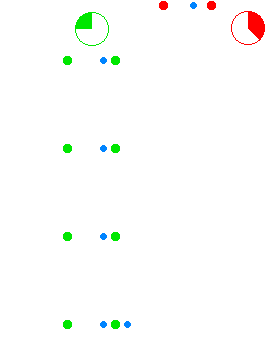Before you do your assignment for real, check out the practical skills booklet, containing everything you need to know to create a great assignment.

For teachers: this is what is allowed in to the write up phase
Here are some sample assignment links


Sept 2023
“The experiments detailed in the course specification can be used for assignments. Centres are obviously free to choose other experiments if they wish, as long as they’re commensurate with the level. One of the advantages of using the experiments in the course is that you can be sure that the physics is accessible and at the correct level.
In the past, we saw some examples where centres had used rotational motion experiments with N5 candidates, and you could tell that the candidates had no clue what they were doing. It’s also been obvious at National 5 level that some centres are still using kits they had for Standard Grade investigations, which is fine, but you do need to make sure that the underlying physics is accessible. To give an example, solar cells was always a popular topic for Standard Grade and we see centres using them for National 5, but explaining how a solar cell produces a potential difference is something N5 candidates will probably struggle with (Higher candidates do when we ask them in the exam).
Higher, of course has the alternative two experiment route, which is quite popular especially with topics such as internal resistance where they can do the two experimental variations.
Your colleagues may wish to have a look at the Physics pages on the Understanding Standards website:
SQA – Understanding Standards: Introduction (Nat 5)
SQA – Understanding Standards: Introduction (Higher)
where they will see several exemplars based on the experiments detailed in the course specification.
If you have things that have worked well in the past, then it’s worth remembering that nothing has changed in any of the coursework requirements, and therefore they should still work in the same way.”
SQA Brilliant Person
This summary is based on the updated information from the SQA. The first two links are for the candidate guide which is produced by the SQA and contains the information that students can access. This can be taken into the reporting stage of your assignment. It is important to check off what you have done at the end of your assignment with the marking instructions. Prior to this it would be a good idea to have gone through the Practical Skills Booklet.
The link below takes you to the full information document which is produced by the SQA. It is a current document. This cannot be taken into the Reporting stage of your assignment, although the document above can.
SQA Higher Physics Assignment.pdf

Here is the powerpoint Martyn and I produced for the IOP on Assignments
This assignment is worth 20 marks, contributing 20% to the overall marks for the course assessment. t applies to the assignment for Higher Physics.
| Section | Description | Mark |
|---|---|---|
| Title and structure | An informative title and a structure that can easily be followed. | 1 |
| Aim | A description of the purpose of your investigation. | 1 |
| Underlying physics | A description of the physics relevant to your aim, which shows your understanding. | 3 |
| Data collection and handling | A brief description of an approach used to collect experimental data. | 1 |
| Sufficient raw data from your experiment. | 1 | |
| Data from your experiment, including any mean and/or other derived values, presented in a table with headings and units. | 1 | |
| Numerical or graphical data relevant to your experiment obtained from an internet/literature source, or raw data relevant to your aim obtained from your second experiment. | 1 | |
| A citation for an internet/literature source and the reference listed later in the report. | 1 | |
| Graphical presentation | The axes have suitable scales. | 1 |
| Suitable labels and units on the axes. | 1 | |
| All data points plotted accurately and, where appropriate, line or curve of best fit drawn. | 1 | |
| Uncertainties | Scale reading uncertainties shown for all measurements and random uncertainty in measurements calculated. | 2 |
| Analysis | Analysis Discussion of experimental data. | 1 |
| Conclusion | A conclusion relating to your aim based on all the data in your report. | 1 |
| Evaluation | Three evaluative statements supported by justifications. | 3 |
| Total | 20 |


Sept 2023




























